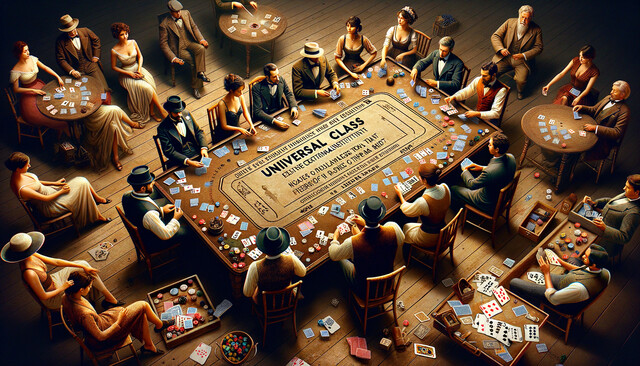When tryouts come around you diligently drive your child there and proceed to sign them up. You take the clipboard with the registration forms and pen dangling from a piece of rope, which indicates their lack of funding. You start filling the forms out and notice a block on the bottom of the page asking if you are interested in becoming a coach. You think to yourself, "Do they have a coach? Surely they wouldn't have tryouts without a coach." Well, they do have a coach, but he is ready to retire the woman taking the registrations tells you, because he's tired and wants to enjoy his golden years while he can.
You look over the box again and again, then look at your excited child and tell the woman that if they absolutely can't find anyone else, you'll consider it. Guess what? You get a phone call within three days asking you to become the coach, because they couldn't find anyone else.
Once you begin coaching your own team you will develop a playbook for yourself that will include your team information.
| Basketball Review |
The rules for youth basketball vary from the professional rules, in that it is meant to be an introduction for these young players into the world of basketball. College basketball games usually have two 20-minute halves. In professional basketball they play four quarters. In youth basketball, it is ordinary to play four 7-minute quarters. You can move them up to 8-minute quarters as they mature and strengthen. The rules are made to help them develop into great players and well-rounded people. The idea is for the children to have fun, first and foremost. If it's fun, they will learn and prosper from it, not to mention that it's also a very healthy source of exercise for them.
You will hear terms such as, half or mid court. That is the center line in the court that separates the baskets. Sidelines are the lines along the side of the court. The audience usually sits on either side of these lines. The baseline is the line behind each basket. Left wing is the left side of the basket and right wing is the right side of the basket. These, and others, will be explained in the chapters ahead.
The rules can be very complex. Let's stick to the basics, they are outlined below:
Basket height -- Baskets should be 8 1/2 feet from the floor. Two baskets are at either end of the court. The court is normally about 92 ft. long by 50 ft. wide. For youth leagues the measurements are typically 74 ft. long and 42 ft. wide.
Though a Basketball team comprises of 10 players, only 5 are allowed inside the court, the 5 remaining players sit on the bench eagerly awaiting their turn. The 5 players are allotted positions as (1 center, 2 guards and 3 forwards). There are a number of formations of centers, forwards and guards. The normal formation is 2 forwards, 1 center and 2 guards.
Each basket scores 2 points (3 if it's made beyond a specific distance) There is no body contact in basketball. This results in a foul, where the opposing team takes possession of the ball or being given free throws from the foul line, otherwise known as the free throw line. If the free throws result in baskets, they are worth 1 point each. Players who receive more than five fouls are disqualified from the game.
Choosing players -- All of the children are entered into a pool for the coaches to choose from. If the player is returning from a previous year, he is still placed into the pool. There is no exception.
Playing the game -- Every player should be able to participate in two quarters. This is also good for the player's morale. The more they play, the better they feel about themselves. Once they have been included in two quarters, they may be substituted. There should be a break between each quarter (usually one minute) and five minutes at the half.
Number of players and penalties -- If you only have five players and one player fouls out, he may stay in the game to maintain five players. If a player gets injured the game may resume with only four players.
The area within the three point area is called the defensive zone. When a defensive violation occurs the referee will stop the game, announce the violation, and then put the ball back into play at the point of the violation.
Before an offensive player can bring the ball across the half court line, the defense must be inside of the 3-point arc.
The ball needs to enter the defensive zone within 10 seconds after crossing half court before a shot can be taken. If this fails to happen, an offensive violation is called by the referee and the game is stopped. He will announce the violation and like in a defensive violation, the ball is put back into play where the violation occurred.
Timeouts -- After timeouts are called, the ball is placed back into play in the following manner: If the offensive team is in the back court, the ball comes back in the front court. The defense stays in the defensive zone until the offense enters the zone. If the ball is hit out of bounds in the front court by defense, it gets put back into play in the front court.
If an in-bounds player touches the ball it results in a change of possession arrow. Usually when opposing players jump for a ball and come down together with it (both players have their arms wrapped around the ball) the referee calls for a "jump ball" where he throws the ball into the air and whichever of the two players comes away with the ball is in possession. A change of possession arrow is used in lieu of a jump ball in this case, which means the ball changes possession without a jump ball.
Playing time -- Teams should be at the game a little early. This will prepare them for later years when they enter high school or college basketball. The standard for bigger league basketball is 15 minutes early. They are very strict and start the games on time. Tardiness is not permitted.
Running Clock -- This clock runs for each quarter. The clock normally only stops for injuries, timeouts and free throws. It is not used for overtime periods. Players that have not fouled out are entitled to play overtime.
Canceling a game -- It happens from time to time. A storm comes into your area and you are unable to proceed with the game. Sometimes it's extenuating circumstances. In these situations, a game that hasn't reached one complete half yet may be rescheduled for another day and time by the referee. On the other hand, a game that has gone beyond the half may be called by the referee as a completed game. In the event it's called a complete game, it will not be played over again. The score stands as it was left.
|
Developing Team Atmosphere |
Let's think of the word team for a minute. Ultimately its meaning can be taken in many different ways, like a group, squad, assembly or collection. It doesn't matter what each player's understanding of the word 'team' is, it all boils down to the way you make them understand it. You may want to try something and ask each player what their definition of the word is. You'll be surprised at the results. Some may say it's just a bunch of kids that play a particular sport together, while others may say it's a group of kids that get together and have fun playing together. Some may have completely different definitions. It depends upon their individual experiences and upbringings. It also has a lot to do with the different cultures in the world today.
As a coach, you need to be positive under all circumstances. You may have had a bad day at the office, or a bad experience at home. Maybe you are just tired or you're not feeling very well. Try not to bring those feeling with you to the practice or game. No matter how hard you try to suppress or hide it, the children will certainly feel it. Take a deep breath, look at yourself in the rearview mirror before you get out of the car and put a big smile on your face. Walk into the practice or game with enthusiasm for your young team.
Remember to always go overboard when it comes to motivating the team, encouragement, acknowledging their improvements, praising their hard work and being a positive role model to them. A little goes a long way when it comes to being supportive. It not only makes them feel good, but it builds their self-esteem and makes them want to work harder for you. The younger the players, the easier they pick up the good habits you teach them. Encourage them to verbalize praise to their teammates and be supportive when one is having an'off' day. This will help with the team bonding process.
Patience will probably be the toughest obstacle to overcome. You are dealing with children and they all have different personalities and different ways of handling frustration. Sally may get angry because she missed a lot of baskets in practice and stomp away to mope on the sidelines. Frank may be upset during a game when another player taunts him verbally. His reaction might be to verbally retaliate. You want to address these situations as soon as they come up, or as soon as you can. Some kind words of encouragement such as, "Brush it off Sally. You'll do better tomorrow." To Frank you might say, "Be the bigger player, don't add flame to the fire. It's only words."
You want to instill mutual respect from the beginning. Each player needs to know that they are required to treat each other with equal respect. Let them know that you will also treat them with respect and they need to do the same for you. They should go out of their way to help one another.
A good way to start things off on the right foot to becoming a great team is to practice some drills together. You can find all kinds of drills on the internet (example: www.betterbasketball.com), in books you can get at the library and bookstores if you want to purchase them for future use. You can even create your own drills. One idea would be to have the players take turns shooting baskets. Each player shoots five times, while the other players watch. When all of the players have finished taking their shots, ask them to sit down together. Begin by asking them to comment on some of the positive things they noticed about how each other shot.
You can have them pass the ball back and forth to each other also, practice dribbling, maybe dribble three times, then shoot for a basket. Whatever you decide, remember these children just want to play and have fun. They are so excited to get out there and play. It's easier if while you are teaching them, you also have them moving around the court at the same time.
This is a teaching and learning experience for the coach too. The aspect of a team environment is something that has changed the corporate world as well. It starts with building positive relationships, mutual respect and self-esteem. It creates a positive atmosphere in with peers work together harmoniously. Of course, children are more apt to learning and forming habits than adults who actually have to adapt a different behavior when taught. Starting this approach with the children will provide a more positive future for them as they get out into the world and utilize the skills you have taught them. They will become better and more positive people.

























